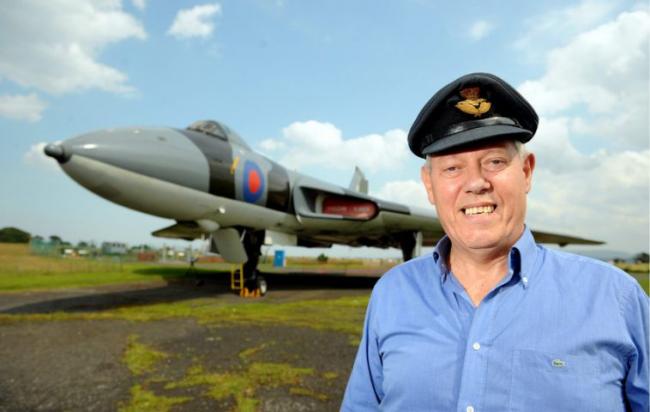Source : Sarah Newstead (News & Star)
Former Flight Lieutenant Frank Hilton was reunited with the aircraft he last flew 37 years ago during the Cold War.
He said: “The smell of every aircraft is particular to itself. As soon as I stepped in, a whole flood of memories came back.”
Mr Hilton flew the Avro Vulcan XJ823 – one of just 19 of the aircraft still surviving from a total production of 136 – as a 26-year-old pilot in 35 squadron.
Now 63 and living in Didsbury, near Manchester, Mr Hilton tracked the bomber down a fortnight ago through the internet.
He told the News & Star he was thrilled to see it once again, particularly as he flew four test missions in it under the close scrutiny of the squadron leaders.
“I flew 24 Vulcans,” he said. “But this was special. I remember almost every second of those missions.”
Mr Hilton also once spent a night in the pilot’s seat waiting to be immobilised from Cyprus. He said: “We were on standby overnight because [Colonel] Gaddafi had just taken over Libya and threatened to blow the airforce out of Cyprus.
I flew 24 Vulcans, but this was special
Frank Hilton
One great thing about the Vulcans is that they always let in water – a drip was falling onto me all night which stopped me sleeping. It was probably the most uncomfortable night of my life!”
The camaraderie between the bomber’s crew of up to seven also stands out in Mr Hilton’s memory. “You had to get on with them. Your life depended on them and theirs depended on you.”
The Solway Aviation Society looks after the plane as part of the Solway Aviation Museum. George Kerr, company secretary, said: “It’s fantastic that Frank is here – he was very attached to it. It’s great for us to hear all of the little foibles of this particular aircraft and all the stories.”
The bomber has been at Carlisle Airport since it was bought from the Royal Air Force by two volunteers for £5,000 back in 1983. It is unlikely ever to fly again.
It did not carry a nuclear bomb whilst piloted by Mr Hilton, but it is likely to have done so at the height of the Cold War.
The Cold War was the period of tension between the United States and the Soviet Union and their respective allies from the mid-1940s until the early 1990s.
Vulcans were sent to Akrotiri airfield on Cyprus in 1969 to provide a British presence in the Middle East and were a backbone of British nuclear strike capability.

